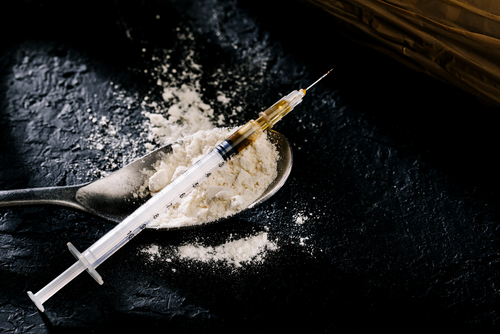What Does Heroin Look Like?

By The Orlando Recovery Center
Last Updated: September 22, 2023

Because of its prevalence, you may hear heroin mentioned a lot in the news, but what does heroin look like? Heroin’s appearance varies on different factors. The powder forms of heroin can vary in color based on purity levels, where the heroin came from and how it was processed. For example, some powdered heroin may seem more off-white or pinkish. The whiter heroin powder is, the purer it is. Sometimes other substances are cut into heroin to make the drug more profitable or more potent. The additional substances often distort the pure white, resulting in brown, gray or off-white appearances.
Heroin is also available as a dark, sticky substance called black tar heroin. This type of heroin is unique in that it’s the only type of heroin to come as a solid. What causes the heroin to transform into the black, tar-like substance is the creation process. Because it’s fast and cheap to manufacture, black tar heroin is the least pure form of heroin. Its black color is the result of impurities leftover from the manufacturing process.
What Happens When You Take Heroin?
When a person uses heroin, it quickly crosses the blood-brain barrier where it then binds to opioid receptors. When the heroin activates opioid receptors, it changes how pain signals are sent between the brain and body. This change alters a person’s emotional response to pain. Heroin also creates a pleasurable or euphoric high, feelings of intense relaxation and a sense of well-being.
Heroin causes a high because when the opioid receptors activate, dopamine releases. Heroin floods the brain with an unnaturally large amount of dopamine. This surge is also what makes heroin so addictive because the dopamine can trigger a reward response.
When someone uses heroin, the short-term effects can include nausea, vomiting, itching and poor mental function. Other signs of short-term heroin use may include flushing of the skin and nodding off or alternating between consciousness and semi-consciousness. Long-term effects include liver and kidney diseases, mental health disorders (e.g., depression or personality disorders) and heart infections.
Methods of Heroin Use
How is heroin used? The most common people use heroin is by injecting it directly into their muscles or veins. Some people may prefer injecting it because doing so generates a faster and stronger euphoric high.
Before someone can inject heroin, they need to liquefy it because it comes as a powder or tar-like substance. To liquify the heroin, it is mixed with a liquid and heated. The heroin is then injected using a syringe. Injecting is sometimes referred to as mainlining. Using heroin intravenously or intramuscularly can create feelings of euphoria within a few seconds.
Smoking heroin in a pipe, a joint or a cigarette is also another way people use it. The smoke is usually inhaled through a straw. When someone smokes heroin, the peak effects usually take anywhere from 10 to 15 minutes to occur.
Street Names for Heroin
What are some street names for heroin? There are many, and a lot of the street names for heroin are based on the appearance of the drug or where it comes from. Some of the street names for heroin are:
- Black eagle
- Black tar
- Black pearl
- Brown crystal
- Brown sugar
- Dirt
- H
- Smack
- Dope
- China White
- Horse
- Skag
- Junk
- Big H
- Mud
- Mexican Brown
- Thunder
- Skunk
- Scag
- Dragon
- Boy
Finding Addiction Treatment for Heroin
Heroin is an incredibly addictive drug. People often become addicted to heroin after using it only once. Heroin also causes physical dependence, leading to withdrawal symptoms when someone stops using it. Treatment is available, however.
If you or a loved one live with heroin addiction, take the first step toward a healthier future by contacting Orlando Recovery Center. A knowledgeable representative is ready to answer any questions you may have about heroin addiction, treatment and how the facility simultaneously addresses co-occurring disorders, like anxiety or PTSD, during addiction treatment.
Sources
NIH National Institute on Drug Abuse. “Heroin.” June 2018. Accessed March 1, 2019.
